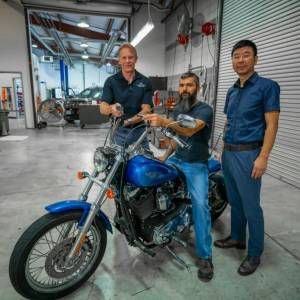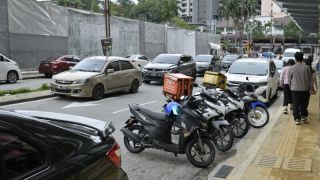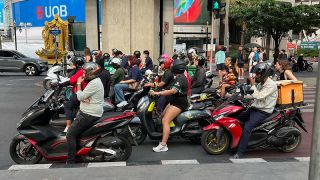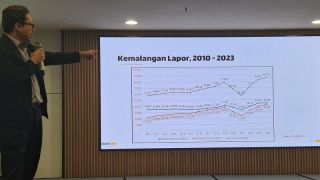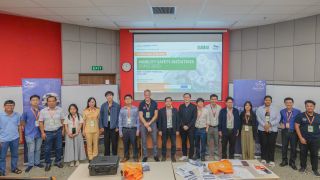Virginia Tech Transportation Institute - 1 Oct 2024
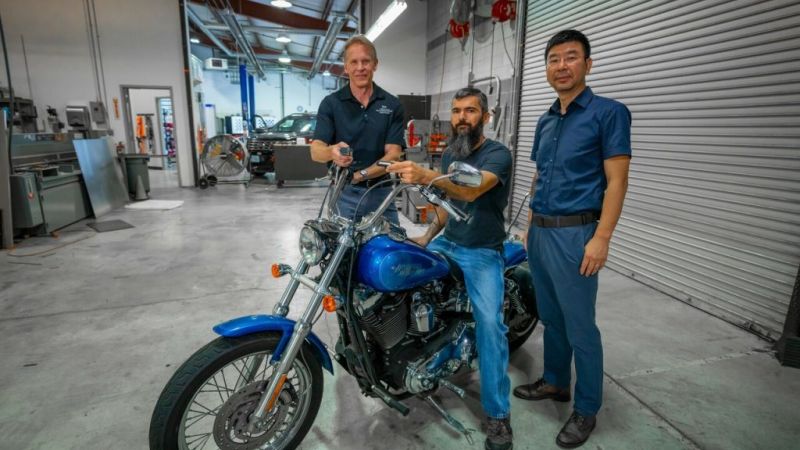
Bumping into some motorcycle researchers at a lunch in Malaysia put Rich Hanowski on a road toward helping reduce rider collisions in low- and middle-income countries.
“It was really kind of by happenstance,” said Hanowski, senior research scientist at the Virginia Tech Transportation Institute (VTTI). “I happened to sit next to that group at lunch, we hit it off and started talking about how we could collaborate in some capacity.”
What could have been a simple meal at a conference instead became an opportunity Hanowski seized to take his research down a new road. The conversation started to open his eyes to areas of the world where transportation culture is dominated by low-capacity motorcycles, little to no riding regulations, and much higher rates of rider fatalities than their international peers.
“And that put me on the path to look for solutions to address this problem,” Hanowski said.
Since that first meeting in 2015, Hanowski, who is the director of VTTI's Division of Freight, Transit, and Heavy Vehicle Safety, has worked with researchers and universities in Malaysia and Indonesia to better quantify the dangerous landscape of motorcycle travel there and explore potential interventions. This spring, he and VTTI colleague Carl Cospel were awarded a proof-of-concept grant from Virginia Tech’s LAUNCH: Center for New Ventures to develop one of those interventions for commercial use — the Motorcycle Collision-Alert and Management System.
“These are some of the poorest people, relatively speaking, in the world and they don’t have the benefit of vehicle safety technology that we have in developed countries,” Hanowski said. “There’s an injustice in that and an opportunity for us at VTTI, where we’re passionate about road safety and saving lives. I actually think it’s our obligation. We need to do this.”
The system includes three components: a technology bundle for the bike — including an accelerometer, GPS, and a forward distance sensor — a mobile device application, and a backend management system. It will provide users with in-ride alerts, a post-ride report, and tailored education and training information to support safe riding in the future.
With the help of Virginia Tech’s LICENSE: Center for Tech Commercialization, the system has become exclusively licensed Virginia Tech Intellectual Properties technology. The initial market focus for the product is companies that use motorcycle fleets as a primary method of delivering goods and services, which is a common practice in this region of the world.
Hanowski also received a Fulbright Scholar Award for the 2024-25 academic year to support this work.
In December 2023, the World Health Organization reported that approximately 1.19 million people die in road traffic crashes each year, with 92 percent of these fatalities occurring in low- and middle-income countries. In those areas, motorcycles are often cited as being involved in more than 70 percent of road deaths.
“The transportation system is very different here than in the U.S.,” said Hardianto Iridiastadi, professor of systems engineering at the Bandung Institute of Technology in Bandung, Indonesia, and a collaborator on the project. “We do not have stop signs. We do not post speed limits. We do not have yield signs. Basically, it’s like people can do whatever they want.”
Prior to 2015, Hanowski’s primary research focus was commercial trucking. His work has impacted national transportation policy including that related to truck driver fatigue, hours-of-service, and driver distraction and texting.
During his 27 years at VTTI, he has served as the principal or co-principal investigator on over $100 million of contract research resulting in more than 300 publications, including journal articles, conference papers, book chapters, and technical reports. Hanowski said his first motorcycle-related study was a comparison of U.S. and Malaysian data on collisions between trucks and motorcycles.
“These really aren’t a big deal in the U.S., but in Malaysia, it turns out there’s a really big problem with motorcycles running into the backs of trucks stopped on the shoulders of roads,” Hanowski said. “When a motorcyclist does that, given the vulnerability of the rider, they are often severely injured or die. So it’s a really significant consequence to a rider’s human error."
Between the high number of motorcycle riders and frequency of high-risk maneuvers that are outlawed in the majority of the U.S., such as lane splitting, many roads in both Malaysia and Indonesia are constantly filled with potentially dangerous actions.
“When I went over there [to Indonesia], I had this picture in my mind based on videos and what Rich had told me, but there’s no comparison to the real thing. I couldn’t believe it,” said Cospel, director of the Hardware Engineering Lab at VTTI. “It was just mass chaos. The bikes were everywhere, pushing every inch between vehicles, the side of the road, sidewalks, everywhere just trying to get by you.”
Hanowski worked with researchers in Malaysia to incorporate elements of VTTI’s pioneering naturalistic driving studies into researching rider behavior in the country.
Developed in the early 1990s, the system uses unobtrusively placed cameras and sensors inside a volunteer’s vehicle to assess driver behavior, crashes, and near-crash incidents, referred to as safety critical events. The institute has since collected data from nearly 7,000 vehicles, including cars, tractor-trailers, bicycles, and e-scooters and amassed enough video that it would take about 1,030 years to watch it all.
By utilizing this system with the motorcycle riders, Hanowski and his team were able to better assess rider behavior.
“We came to the realization that riders, when they’re doing these risky activities, were not always looking forward,” Hanowski said. “They’re looking to the side, they’re checking blind spots, they’re checking over their shoulders for other vehicles that might be merging, etc. All of this while the bike travels forward.”
